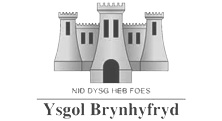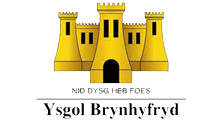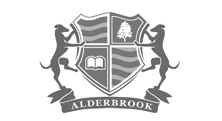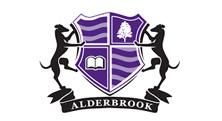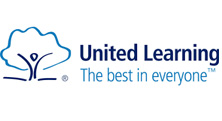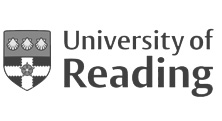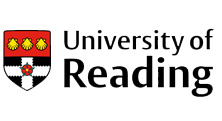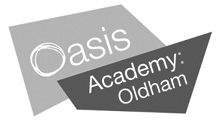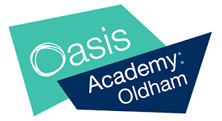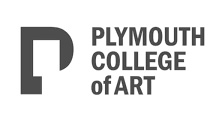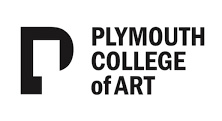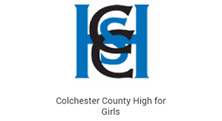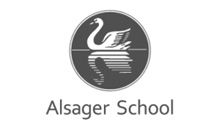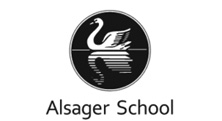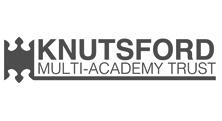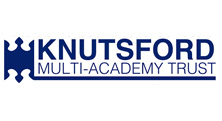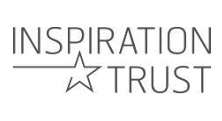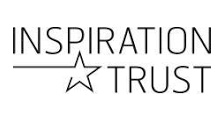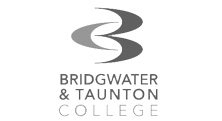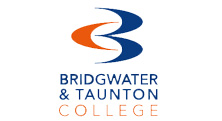We share an extensive range
of thinking, studying, revision and planning strategies
Check out the list below
+ / - / ?
The ‘Plus minus interesting’ (PMI) strategy is a reflective, lateral thinking tool developed by Edward de Bono. The strategy can be applied in numerous ways. It is commonly used when you ask the three questions:
- What are the plus points?
- What are the negatives?
- What am I not sure about?
We apply the strategy at the end of each Live MADE Workshop. The strategy is used to get all students taking part in the session, to reflect on the techniques learnt. We ask the questions:
- Which techniques worked for me?
- Which techniques didn’t work for me?
- Which techniques will I research further?
Use the PMI tool to broaden your thinking, considering ideas from different perspectives. Use it to weigh the pros and cons of your plans.
Active reading
Active reading takes place when you are proactively involved in the reading of a text. Active reading is about more than reading words in black and white and answering questions afterwards. Your engagement is important in order to optimise your learning, so when you get involved in what you are reading, you are more likely to better understand the meaning within the text.
Annotating
At it’s core, annotating is interacting with the text that you are reading. When you interact with a person, you look for signs that give additional and deeper levels of meaning; body language, volume, intonation and so on. Annotating is when you write or draw stuff alongside the text to help you process, question and understand what you are reading. These notations can also act as cues or revision notes when you come to look through the text a second time.
Association
Human memory relies mostly on association, otherwise known as associative memory. Objects or images frequently seen together become linked in your mind; when you try to retrieve information, one thing reminds you of another, which reminds you of yet another, and so on. Stay alert for links and associations that pop into your mind, no matter how strange they seem; this is your brain making new connections and strengthening your memories.
Benchmarking
Benchmarking is an analytical process aimed at helping you to measure your progress and levels of attainment across different subjects or areas of study. It enables you to identify strengths and weaknesses and prioritise your efforts accordingly.
Bridge
The Bridge is a simple, visual scaffold for arranging your ideas when building a persuasive argument. Your position or conclusion should be underpinned by multiple reasons, each resting on the firm foundations of evidence. This technique is useful for preparing yourself before a presentation, an extended exam question or an essay.
Chunking
Chunking refers to the process of taking individual pieces of information and arranging them into larger groups (chunks). The ideal size of chunks is thought to be between two to six items. These chunks of information are able to be retrieved from your memory more easily because of their connectedness and familiarity.
Circle of Control
The Circle of Control is a useful model created by Stephen Covey. It comprises three concentric circles. In the centre, are the things we can directly control. In the second circle go the things we have influence over. In the third circle go the things that may concern us but we have no influence over them. It’s a concept that can shed a brighter light on the relationship between influence and control, and the things we need to let go of.
Colour
Colour can be used to group information (see mind maps for further information). Colour can also be used to codify information, giving it another level of meaning. When taking notes for example, you might write quotes in black, your thoughts in blue and examples in red. Strangely, certain colours of ink can improve memory recall! Research suggests that reading text written in colour increases the likelihood that you will remember that information.
Cornell method
The Cornell Method is a system for taking, organising, questioning and reviewing your notes. It was devised by Professor Walter Pauk of Cornell University in the 1950’s. It requires very little preparation. You should divide your note paper into four sections, each with a different purpose; title, general notes, cues and summary. Each section encourages you to think in a different way about the material you are learning.
Cue cards
A popular technique amongst students is the creation of cue cards (also known as flash cards or revision cards). The simple idea behind using cue cards is that by using a small format, you need to filter your notes to get them to fit on the card. You are encouraged to read, analyse, condense and arrange your desired information in the most useful and logical way. It requires you to actively engage in the process of learning. The bonus is that you now have a resource from which to revise on the go!
To elevate your cue cards to another level, write information that you want to remember on one side of the card and a question on the other. When revising, read the question and test your knowledge by answering it without looking at the information on the other side.
Embrace Change
Change is fundamental; it’s going to happen – in every part of your life, from personal to professional. Some changes will be fast, some slow. Some changes will be uplifting, some will be challenging. The key is to embrace change and not to fear it. Everything is temporary. Things will get better.
Environment
Arrange your study zone to help you focus and concentrate. Try not to study whilst lying on your bed – that place is associated with tiredness and sleep. Instead, try to simulate exam conditions by working at a desk, sitting in a chair. It will greatly benefit your attention span.
Essay structure
When approaching an essay, you might assume that you have to start with the introduction, then write the main body and finish with the conclusion. The thing is, a lot of us get stuck at this point, because we’re trying to write an introduction to something that doesn’t exist yet! Try this approach instead; first write the main body of the essay, including all your key points, sources and facts, then write the conclusion. Finally, write a snappy introduction that opens the door to your essay.
Exam technique
We’ve compiled our 12 top tips for how to approach an exam on the day:
- Arrive early
- Bring a spare pen
- Take water with you
- Don’t discuss the exam with mates
- Read through the whole paper
- Decide what questions you will answer and in what order
- Re-read each individual question before you start writing
- Keep an eye on the time
- Answer all the questions required
- Try and leave some time for checking
- Don’t leave early
- Stay focused and positive
FLORA
The acronym FLORA describes at which points in a study session, your memory is working the most effectively.
F – First. You seem to remember things well, when they occur at the beginning of a revision/studying session.
L – Last. You are especially good at remembering what the last thing was you studied or revised.
O – Outstanding. You remember the names, facts or ideas that really stood out. They were amusing, peculiar, disturbing.
R – You remember what gets repeated, repeated, repeated.
A – Associate. You remember things well when they clearly link to other things that you already know, or that you have direct experience of.
Forgetting curve
The forgetting curve is a mathematical formula that shows the rate at which information is forgotten after it is learned. The idea was put forward in the late 19th century, by German psychologist Hermann Ebbinghaus, who was one of the first scientists to conduct experiments with the aim of understanding how memory works.
Formal Language
Formal language is identified by the use of standard English, complex sentence structures, infrequent use of personal pronouns, and a lack of slang terms. Formal language is commonly used within the written form; informal language is commonly used when we speak.
Goal setting
Goal setting is an incredibly powerful motivator. It can help you to clarify your aspirations and create a plan of action to follow. ‘Goals,’ as defined by Latham & Locke (2002) are “the object or aim of an action, for example, to attain a specific standard of proficiency, usually within a specified time limit.” They are the stepping-stones you wish to achieve on the road to success and create a useful path to navigate and accelerate your progress.
Check out the Goals and Aspirations ONLINE course to learn more
GROW coaching model
The GROW coaching model is a simple and widely-used system for structuring a coaching session. It’s a solution focused model and the letters stand for: Goals, Reality, Options and What next? This easy-to-use model is a great starting point for new coaches.
GOALS: What are you looking to achieve, work towards or develop?
REALITY: What is the current situation, level or impact?
OPTIONS: What could you do or not do? What are your options?
WHAT NEXT: What actions are you going to take today, to move you towards your goal?
Habits
Habits are the small decisions and actions you take on a daily basis. Your life is to great degree, the sum of your habits. What you repeatedly do (what you think, read, watch and do each day) influences the things you believe in, the person you become, and the results you achieve. When you learn to change your habits, you can transform your life.
Check the Marginal Gains ONLINE course to learn more
Handshake
The handshake is believed to be a symbol of peace. It’s reported that thousands of years ago, by extending a stranger your right hand, it would show that you weren’t carrying any weapons. It was also said, that by moving the hands in an ‘up and down‘ motion, any concealed knives that could be up a sleeve would be dislodged. One of the earliest known depictions of a handshake is featured within an ancient Assyrian relief (9th century BC) depicting the Assyrian King Shalmaneser III shaking the hand of the Babylonian King Marduk-zakir-shumi I to seal an alliance.
In today’s Covid affected world, the elbow bump has replaced the handshake as the accepted way to physically connect with another person. What does your elbow bump communicate about you?
Highlighting
Highlighting can transform your learning when done correctly. The theory is that highlighting works through making certain parts of the text more distinctive than others. Don’t fall into the trap of highlighting the majority of the words; this is no better than colouring-in. Here are 4 simple steps for effective highlighting:
- Read through the text first without highlighting anything.
- Have a think about it.
- Read through the text again and sparingly highlight the key words, making annotations or notes as you go. This can be done in the margin or on note paper.
- Use multiple colours for highlighting and create your own system. (i.e. yellow for first reading, orange for quote references and green for formulae.
How much time have I got?
It’s easy to think “I don’t have enough time to revise!”. This statement is usually founded on an assumption rather than reality. The best thing to do is to work out exactly how much time you have. In all likelihood, you will surprised to find that you have much more time than you thought.
Simply create a table and work out how much time you have each day once you’ve subtracted the hours that you’re already committed to, for activities such as; school, dinner, clubs and sleep. Then you can divide the remaining time across your studies and relaxation.
Influence and control
Many of us spend a large part of our time concerned with the things we have no control over; the weather, what other people think of us and will they be impressed? Try and focus on the things that you can influence or have control of; your own behaviour, focus, effort and kindness.
Internal dialogue
Do you talk to yourself? Of course you do. All of us have an internal voice, often referred to as ‘self-talk’ or ‘inner speech’. For many of us this voice remains an internal monologue; a running commentary on what’s going on while we are conscious. Many of us don’t question the voice in our head and accept it as ‘just the way we think’. This can lead to problems if the majority of our thinking is negative or doubt-laden. Becoming aware of our internal thinking is the first step in moving towards a more positive way of thinking. Positive self-talk involves noticing the reality of the situation, overriding self-limiting or destructive beliefs and the biases that can lead to negative self-talk. Being able to challenge and influence your thinking is fundamental in building confidence and a growth mindset.
Kinesics
The word kinesics comes from the root word kinesis, which means “movement,” and refers to the study of gestures, posture, eye contact, and facial expressions. We have all heard how powerful body language is in the delivery of messages and emotions. Once we have become aware of our own mannerisms, we can look to make small adjustments in our body language that will improve our communication and interaction with others.
Managing distractions
We have to accept that distractions are a part of daily, modern life. However, being able to manage your distractions is an important skill when trying to work effectively and efficiently. What kinds of distractions do you encounter? Here are some of the classics:
- Mobile phone
- Noise and music
- Interruptions from other people
- Displacement activities (doing something else to distract you from what is important)
Here are five top tips for managing distractions:
- Writing a to-do list and prioritising the tasks
- Turn off notifications on your phone
- Turn down the volume on any music
- Clear your desk
- Work in 20 minute chunks (time boxing) and taking regular breaks
Marginal gains
The aggregation of marginal gains is a wonderfully simple theory that can help you to create great results and the technique can be adapted to many purposes. The idea is that if you take a hobby/discipline or sport and break it down into its constituent parts then improve each part by just a small fraction. Clump all those small improvements together and you will see a significant increase in performance. This technique can be applied repeatedly and across multiple areas of life to accelerate your progress.
Memory palace
The Memory Palace (also known as the method of loci) is a memorisation technique that taps into your natural ability to remember places; your spatial memory. This technique works by attaching memory triggers to familiar locations. A trigger is a meaningful image, sound or word which ‘triggers’ the release of a larger group of information from your memory. If you close your eyes, you can probably visualise the layout of your bedroom, or your Maths classroom. Now imagine, having a set of triggers around those rooms which allow you to recall all the information you need. Unleash the power of the memory palace!
Memory stories
A memory story is, as its name suggests, a story wherein which information is locked in order through the events in a story. The memory story method (sometimes called the sentence mnemonic or ‘link’ method) is probably the most easily learned memory strategy. The story method involves linking words to be learned through a memorable story – very much like the classic car journey game; ‘I went to the shops and bought a …’.
Memory stack
The memory stack is an evolution of the memory story. In the memory stack, items are linked together through a story but with added actions and emphasis. Each item in the story should release the following piece of information, with each piece of information building upon the last; creating in effect, a ‘stack’ of concepts.
Memory songs
A memory song is an example of a mnemonic device (a technique to help a person improve their ability to remember something). You can make a song using any type of music you choose for any list of items. The information you want to remember will become attached to the melodic structure of the backing track. The aim is that the music underpinning your song will help to trigger the information attached to it.
Mind mapping
A mind map is a diagram which organises information around a central concept or topic. You can use this technique for brainstorming ideas, creating detailed revision notes, essay plans or to structure and guide your thinking before answering an exam question.
Mnemonic sentences
Mnemonic sentences come in two different flavours; acronyms and acrostics. To create an acronym, take the first letter of each of the items that you want to remember and make a new word out of them. An acrostic is like an acronym, but instead of making a word out of the first letters, you make a sentence.
Music for learning
Music can have both positive and negative effects on studying. This is dependent on three factors: the student, the music and the volume.
Every student is unique. Some prefer total silence; in fact, they’re distracted by the slightest noise. Others can’t focus unless they shut the world out with music. You need to find out what works for you. Music can create a mood – what mood helps you to focus?
If you feel that you need background music to focus, then here are five simple tips:
- Turn down the volume
- Try music with fewer lyrics
- Don’t listen to your favourite ‘sing-a-long’ tunes
- Try soothing and calming music
- Create a playlist that you listen to each time you study
Number rhyme
The number rhyme system is a mnemonic technique (very similar to number shape) which pairs the information you want to remember with visual hooks that rhyme with the numbers from 1-10. 1 being a bun, 2 a shoe and so on. Each piece of information you want to remember then needs to be connected to each visual hook in turn. When you want to remember the sequence, count from 1-10 and release the triggers.
Number shape
The number shape system is a mnemonic technique (very similar to number rhyme) which pairs the information you want to remember with visual hooks that represents the numbers from 1-10. 1 being a candle, 2 a swan’s neck and so on. Each piece of information you want to remember then needs to be connected to each visual hook in turn. When you want to remember the sequence, count from 1-10 and release the triggers.
Number words
The Number Words technique is a mnemonic device specifically designed for memorising numbers. It’s perfect for when you want to remember a significant date, value or statistic.
The Number Words technique works by creating a memorable, mnemonic sentence which will trigger the release of your desired number. This simple, yet powerful technique aids your memory in two ways. Not only will you end up with a trigger to release your desired number, but the focused attention and creative thinking that you apply in converting the number into a sentence will accelerate the process of committing the number to your long-term memory. Watch the video to find out how to use this simple technique.
Paraphrasing
Paraphrasing is when you actively engage with another writer’s ideas. Rather than just quoting someone else, you express their opinion or thoughts in your own words. The purpose of paraphrasing is to build on someone else’s work in an original way. Through paraphrasing, you can demonstrate that you have understood an author’s ideas and that you can analyse and restate them without altering the meaning.
Positive People
Connect with positive people to give you the encouragement, support and advice to accelerate your progress. Of course, you can also be the positive connection for someone else looking for support. When we share our stories, knowledge and experience with others, we grow, thrive and feel good about ourselves, ultimately enhancing our self-esteem.
Power language
Language is a crucial tool in encouraging others to engage, reflect and progress. Power language patterns can be used at strategic moments within a conversation, workshop or presentation to reinforce key messages and deliver clear instructions. Examples of power language are:
- The Double Whammy
- The Embedded Command
- The Q and A
- Groupthink
Power move
A power move is a gesture or movement which when executed, triggers an emotional and physical response. Classic examples of this are the fist pump, stretch or click of the fingers.
Prioritising
When you have a lot of homework or revision to do, it is important to prioritise. Write a list of the things you think you need to do, then divide your list into tasks. You may not want to be reminded of how much work you have to do, but writing down all your tasks is the first step in getting them done. Here are three steps to prioritising your to-do list:
- Break down complex tasks – Projects are less overwhelming if you tackle them one step at a time.
- Prioritise your list – Deadlines are the priority, while extra research or revision can wait till later.
- Tick one quick task off immediately – get the ball rolling.
Proofing
Proofing is the act of going back through your essay or assignment to correct any typos or grammatical errors. Alongside finding individual errors, proofing will also raise your awareness to the types of mistake you regularly make. This should help you avoid similar errors in the future. When proofing, try and focus on the surface of your text, not on the content. For a more subjective proofing of your work, get someone else to do it; it’s likely they will find mistakes that you passed over.
Proxemics
Proxemics is the study of human use of space and it’s effects on behaviour, communication, and social interaction. Using proxemics can improve your communication and enhance your command of the room.
Edward T. Hall, the cultural anthropologist who coined the term in 1963, described what he referred to as ‘interpersonal distances’ (the relative distances between people) as four distinct zones:
- intimate space
- personal space
- social space
- public space.
Referencing
When writing an essay, you might want to quote other writer’s words and ideas to show your depth of knowledge and understanding. When you do this, you need to reference them properly. Clear referencing shows that you acknowledge other peoples’ work and it allows the reader to locate the sources you have used.
Sander de Groot. MADE Training. 2021. www.made-training.com
Glossary of Techniques
Re-focus trigger
If you get distracted from your work, it can be difficult or time-consuming to get back into a productive and focus state of mind (known as ‘flow’). Research suggests that it can take up to 20 minutes to refocus properly after a distraction. Something that can help however, is a re-focus trigger. Do something special each time before you attempt to go back into a flow state after a distraction. Whether it’s repeating a mantra or affirmation, taking a few deep breaths or tidying your pens on your desk — do the exact same thing each time you want to focus and you will over time create a habitual re-focus trigger.
Revision posters
A revision poster is a large, visual explanation of a subject or topic. It might combine elements of different study techniques such as mind maps, key words, diagrams and quotes to give an overview of the topic or ‘lid of the jigsaw’ view.
Shield
The shield is a visual metaphor for strength, identity and resilience. We use it as a visual framework for holding ideas and concepts with the aim of…
1) encouraging the adoption of growth mindsets, and…
2) focusing our minds on goals and aspirations we want to make progress with.
Time boxing
Timeboxing is a method of dividing working time into small manageable chunks with the aim of increasing productivity and effectiveness. It is really useful when you’re under pressure to reach stated goals. Most commonly, time is split into 20 minute chunks and each chunk is focused on the completion of a specific task. After each 20 minute chunk of focused work, a short break is taken to refresh your focus.
Time management matrix
The time management matrix made popular by Stephen R. Covey can help you to identify what you actually spend your time on. It is a useful analysis tool if you want to become better at prioritising your work and achieving more balance.
Timetabling
A timetable for study and revision will allow you to prioritise subjects, maintain momentum and avoid burnout. It is the first thing you should do before getting stuck into revision.
Turnaround
The Turnaround is a thinking tool which can help you to reframe or rethink a negative thought pattern. To use the technique, first ask yourself how true your negative thinking really is. Then simply flip or ‘turnaround’ your negative thinking as the polar opposite and then ask how true is this? Finally, reframe your thinking in a realistic and optimistic way. For example, “I’m never going to succeed at this.” Is this true? No. “I’m definitely going to succeed at this!” Is this true? Maybe not. “I’ll give it my best shot, and I’m sure I’ll improve. Let’s see how much I can improve this week.”
Study buddy
Studying on your own can sometimes feel like a chore, especially if it’s on a subject that you struggle with. To help with this, you might try and work with someone else, a ‘study buddy’. Select your study buddy carefully. You should choose someone who is able to focus and be disciplined when at work, it’s not just about hanging out with a mate. You could choose different study buddies to help you with each subject.
Wheel of balance
The wheel of balance is a simple, visual framework used in analysing and measuring our progress, then identifying areas for improvement. It can used within any area in which you want to accelerate your performance.
Win / Learn / Change
It’s useful to think that no experience is a ‘bad experience’, instead each one presents an opportunity to learn, develop and grow. When you receive a good mark for a successful piece of homework, it’s easy to smile, feel good and forget about it. When you encounter a poor mark or a failed project, there is the tendency to sweep things under the carpet quickly and move on. To really benefit and develop ourselves, in addition to just going through the experience, we should take some time to reflect on it. The win/learn/change technique is a great way to do just that.
Win – What worked well? What were the wins?
Learn – What didn’t go so well? What can you learn about yourself or your behaviour which stopped you from getting a better result?
Change – What would you do differently next time? What actions will you take?
Writing prompts
A writing prompt is a topic around which you start jotting down ideas. The aim is to write without pressure and encourage creativity. A writing prompt can be a short phrase, question or even a picture. It can serve as a way of generating ideas for a piece of creative writing; it can also serve as a way of letting go of the anxiety around starting an essay. Once you have spent a little time writing to a prompt, it should be easier to return to the assignment that you need to begin.


